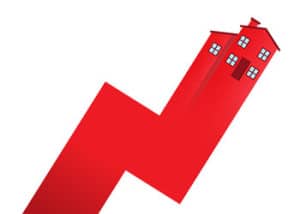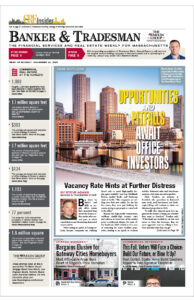Like the proverbial phoenix, Greater Boston is rising from the ashes of the Great Recession.
Single-family home prices keep climbing and so does the number of sales. Interest rates remain at historical lows and the job market is looking pretty great. All in all, it’s a pretty good time to be a Greater Bostonian – if you reside in the sweet spot where those statistics converge.
For every positive – and there are many – there’s an inverse statistic. Student debt is crippling the finances of many would-be homeowners. Boston rents are the highest they have ever been, further constraining meager resources, and many workers will see hikes in their health insurance premiums as Obamacare is phased in. Food costs more; so do fuel, T passes and parking. Real wages have stagnated while the cost of living climbs.
Multifamily owners – ranging from the triple-deckers in Southie to smaller apartment buildings in Brighton – are converting to condos as quick as they can, selling in cash-only deals and retiring to the Bahamas. (That last part is apocryphal, but conversions are indeed up and the condo market continues to be red-hot in the city.)
Concerned murmurs of another bubble are beginning in the streets of Massachusetts’ hottest towns. Many have already surpassed their pre-recession median prices and are climbing ever higher. Bidding wars and pocket listings are making comebacks.
And foreclosures continue to climb by double-digits; though those in a position to know (including the publishers of this newspaper), say it’s nothing to be concerned about the situation certainly deserves a watchful eye.
In truth, Massachusetts may have one of the best and most insulated housing markets in the county. Our public schools are good. Our world-class universities feed a pipeline of well-educated job-seekers, who in turn become residents and send their kids to those same schools. The housing stock may be older and smaller, but it’s also sturdy and not generally prone to flash floods, wildfires, tornadoes, mudslides or earthquakes. (Those blizzards though …)
It’s also true that the desire for single-family homes will likely continue well into the next decade – if not the next century. But despite the evidence and testimony from experts, cities, towns and developers are still far behind the curve on housing. They are not proposing and building the kind of high-density, amenity-rich housing the aging Boomers and upcoming Millennials so desire.
All of this will come to a head in the next decade or so, and the fallout may harm most the backbone of our industry: the middle class and working families.
As is ever the case, it will be those who are smart, wily or lucky who come out ahead. But the odds are stacked against many of the prospective future job-holders and homebuyers – the tail end of the Millennials and Generation Z coming up behind them. Massachusetts has always been an expensive place to live; the recession may have dented housing costs, but the underlying issues remain. While we celebrate the market’s recovery, it’s time to look to the future.
Without some attention to these issues, we’ll become just another world of the haves and the have-nots. The commonwealth – and its residents, current and future – deserve better.






